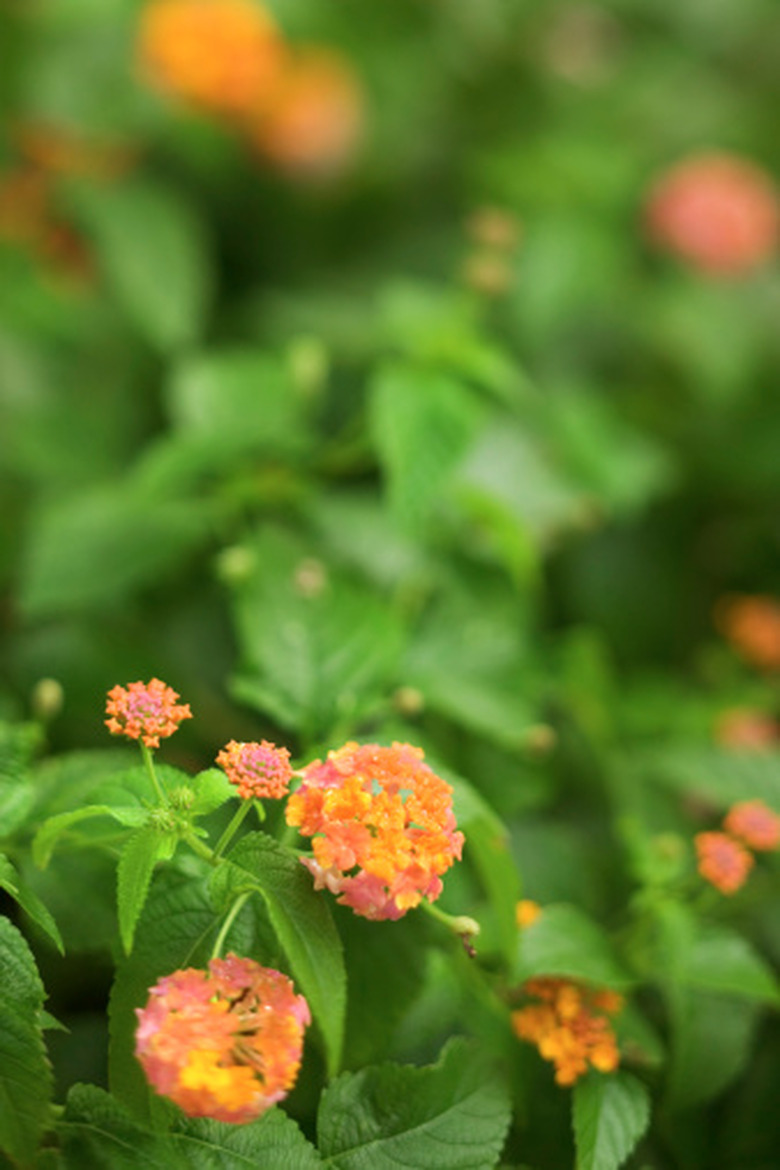Lantana Pests
Lantanas are ornamental plants prized for cold hardiness, bright blooms and a degree of drought tolerance. Although lantanas are generally quite resistant to pests and diseases, a handful of pests may negatively impact this plant.
Lantanas are ornamental plants prized for cold hardiness, bright blooms and a degree of drought tolerance. Although lantanas are generally quite resistant to pests and diseases, a handful of pests may negatively impact this plant. Proper cultural practices will help to limit the severity of an attack, and early detection and identification of a pest will speed up the treatment and recovery process.
Lace Bugs
Lace bugs are the most common lantana pests in many regions. Lace bug populations grow most rapidly when temperatures approach 90 degrees Fahrenheit. This insect feeds on the undersides of leaves, causing the top of the leaf to develop yellow, brown or white specks; heavily infested leaves turn yellow or brown and may drop early. The adult lays eggs on the leaf underside and secures them with a noticeable brownish substance. To treat heavy lace bug infestations, prune out severely damaged potions of the lantana and treat the plant with a systematic insecticide like acephate or imidacloprid. Provide adequate water and nutrients to ensure lantana recovery.
- Lantanas are ornamental plants prized for cold hardiness, bright blooms and a degree of drought tolerance.
- Although lantanas are generally quite resistant to pests and diseases, a handful of pests may negatively impact this plant.
Lantana Leafblotch Miner
The lantana leafblotch miner feeds on the interior of the lantana leaf, leaving a whitish trail or blotch. The adult is a small, shiny black fly and the feeding larvae is yellowish white. Although leaf miner damage can be noticeable, plants can tolerate a fair amount of injury before health is affected. Control this pest by pruning and destroying infested branches and encouraging healthy growth with proper cultural practices. Many regions also have parasitic wasps that help control leaf miner populations. Additionally, several insecticides contain active ingredients capable of leaf miner control.
Whiteflies
Whiteflies are small, white insects that have a fine, powdery wax body covering. Immature whiteflies, located on leaf undersides, are tiny, flat, oval and somewhat translucent. Both adult and young whiteflies feed on the lantana, leaving yellow leaf spots. A severe infestation can cause leaf drop. This pest can be controlled with horticultural oil, insecticidal soap and a number of different insecticides.
- The lantana leafblotch miner feeds on the interior of the lantana leaf, leaving a whitish trail or blotch.
- Both adult and young whiteflies feed on the lantana, leaving yellow leaf spots.
Aphids
Several aphid species may feed on lantana, sucking sap from the plant and excreting a sticky substance known as honeydew. This pest is a small, soft-bodied insect that can be found in a variety of colors. Aphids generally group together on buds, leaf undersides and on growing tips. Heavily infested plants can experience leaf yellowing, leaf drop or curl and wilting. Most insecticides are labelled for aphid control.
Mites
Spider mites are tiny, eight-legged pests found on the undersides of leaves. The presence of these pests is indicated by a silken webbing and yellow to gray stippling on leaves. Mite damage is most severe during hot, dry periods, and a severe infestation can cause leaf drop. Mites can be controlled with horticultural oil, insecticidal soaps and a number of insecticides.
- Several aphid species may feed on lantana, sucking sap from the plant and excreting a sticky substance known as honeydew.
- Heavily infested plants can experience leaf yellowing, leaf drop or curl and wilting.
Mealybugs
Mealybugs are one-fourth inch long, soft-bodied insects that can be found on stems or the undersides of leaves along veins. Mealybug damage may resemble that of aphids. Mealybugs lay their eggs in clusters covered with cottony white material. Mealybugs can be treated with a 50-50 spray of water and isopropyl alcohol, horticultural oil, insecticidal soaps or a number of different insecticides.
